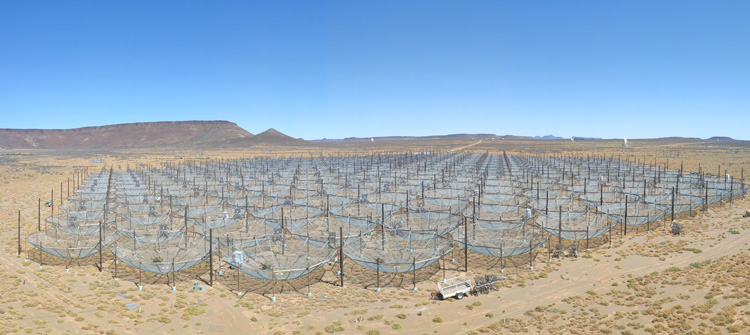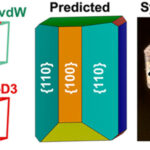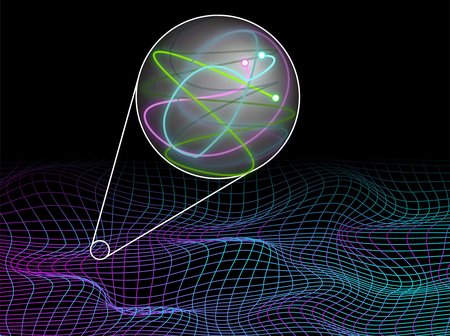2023-01-24 カリフォルニア大学バークレー校(UCB)
 The HERA radio telescope consists of 350 dishes pointed upward to detect 21-centimeter emissions from the early universe. It is located in a radio-quiet region of the arid Karoo in South Africa. (Photo credit: Dara Storer, 2022)
The HERA radio telescope consists of 350 dishes pointed upward to detect 21-centimeter emissions from the early universe. It is located in a radio-quiet region of the arid Karoo in South Africa. (Photo credit: Dara Storer, 2022)
◆アストロフィジカル・ジャーナル』誌に掲載された論文で、水素再電離アレイ(Hydrogen Epoch of Reionization Array: HERA)チームは、宇宙の歴史におけるこのユニークな時期を探るために、すでに世界で最も感度の高い電波望遠鏡だったアレイの感度を2倍に高めたと報告しています。
◆電波望遠鏡が完全に稼働し、今秋をめどに較正が行われれば、約2億年前からビッグバン後約10億年までの間に進化した電離水素と中性水素の泡の3次元マップを作成する予定です。このマップは、初期の星や銀河が現在私たちが見ているものとどう違うのか、また宇宙全体がどのような青春時代を送っていたのかを教えてくれるかもしれません。
◆他の望遠鏡もまた、初期宇宙を覗き込んでいます。新しいジェイムズ・ウェッブ宇宙望遠鏡 (JWST) は、ビッグバンによる宇宙の誕生から約3億2500万年後に存在した銀河を撮像しました。しかし、JWST が見ることができるのは、再電離期に形成された最も明るい銀河だけで、星が銀河間物質を温めて水素ガスの大部分をイオン化した、小さいながらもはるかに多くの矮小銀河は見えません。
◆HERAは、初期の星と銀河の間を満たしていた中性水素からの放射を検出し、特に、水素が電離したために電波を発したり吸収したりしなくなった時期を特定することを目指しています。
◆HERAチームは、宇宙の暗黒時代の冷たい水素の中に、イオン化した水素の泡をまだ検出していませんが、この事実は、宇宙初期に星がどのように進化したかといういくつかの説を否定しています。
◆具体的には、ビッグバンから約2億年後に形成されたと考えられる最も初期の星は、水素とヘリウム以外の元素をほとんど含んでいなかったことが、今回のデータで明らかになりました。これは、現在の星の組成とは異なり、ヘリウムよりも重いリチウムからウランまでのさまざまな金属元素(天文学用語)を含んでいる。この発見は、星や星の爆発がどのように他の元素の大部分を生み出したかという、現在のモデルと一致している。
<関連情報>
- https://news.berkeley.edu/2023/01/24/were-galaxies-much-different-in-the-early-universe/
- https://arxiv.org/abs/2210.04912
HERAフェーズI観測による21cm EoRパワースペクトルとIGMのX線加熱に対する制約の改善
Improved Constraints on the 21 cm EoR Power Spectrum and the X-Ray Heating of the IGM with HERA Phase I Observations
The HERA Collaboration: Zara Abdurashidova, Tyrone Adams, James E. Aguirre, Paul Alexander, Zaki S. Ali, Rushelle Baartman, Yanga Balfour, Rennan Barkana, Adam P. Beardsley, Gianni Bernardi, Tashalee S. Billings, Judd D. Bowman, Richard F. Bradley, Daniela Breitman, Philip Bull, Jacob Burba, Steve Carey, Chris L. Carilli, Carina Cheng, Samir Choudhuri, David R. DeBoer, Eloy de Lera Acedo, Matt Dexter, Joshua S. Dillon, John Ely, Aaron Ewall-Wice, Nicolas Fagnoni, Anastasia Fialkov, Randall Fritz, Steven R. Furlanetto, Kingsley Gale-Sides, Hugh Garsden, Brian Glendenning, Adélie Gorce, Deepthi Gorthi, Bradley Greig, Jasper Grobbelaar, Ziyaad Halday, Bryna J. Hazelton, Stefan Heimersheim, Jacqueline N. Hewitt, Jack Hickish, Daniel C. Jacobs, Austin Julius, Nicholas S. Kern, Joshua Kerrigan, Piyanat Kittiwisit, Saul A. Kohn, Matthew Kolopanis, Adam Lanman, Paul La Plante, David Lewis, Adrian Liu, Anita Loots, Yin-Zhe Ma, David H.E. MacMahon, Lourence Malan, Keith Malgas, Cresshim Malgas, Matthys Maree, Bradley Marero, Zachary E. Martinot, Lisa McBride, Andrei Mesinger, Jordan Mirocha, Mathakane Molewa, Miguel F. Morales, Tshegofalang Mosiane, Julian B. Muñoz, Steven G. Murray, Vighnesh Nagpal, Abraham R. Neben, Bojan Nikolic, Chuneeta D. Nunhokee, Hans Nuwegeld, Aaron R. Parsons, Robert Pascua, Nipanjana Patra, Samantha Pieterse, Yuxiang Qin, Nima Razavi-Ghods, James Robnett, Kathryn Rosie, Mario G. Santos, Peter Sims, Saurabh Singh, Craig Smith, Hilton Swarts, Jianrong Tan, Nithyanandan Thyagarajan, Michael J. Wilensky, Peter K. G. Williams, Pieter van Wyngaarden, Haoxuan Zheng
arXiv last revised :19 Jan 2023
DOI:https://doi.org/10.48550/arXiv.2210.04912
We report the most sensitive upper limits to date on the 21 cm epoch of reionization power spectrum using 94 nights of observing with Phase I of the Hydrogen Epoch of Reionization Array (HERA). Using similar analysis techniques as in previously reported limits (HERA Collaboration 2022a), we find at 95% confidence that Δ2(k=0.34 h Mpc−1) ≤457 mK2 at z=7.9 and that Δ2(k=0.36 h Mpc−1)≤3,496 mK2 at z=10.4, an improvement by a factor of 2.1 and 2.6 respectively. These limits are mostly consistent with thermal noise over a wide range of k after our data quality cuts, despite performing a relatively conservative analysis designed to minimize signal loss. Our results are validated with both statistical tests on the data and end-to-end pipeline simulations. We also report updated constraints on the astrophysics of reionization and the cosmic dawn. Using multiple independent modeling and inference techniques previously employed by HERA Collaboration (2022b), we find that the intergalactic medium must have been heated above the adiabatic cooling limit at least as early as z=10.4, ruling out a broad set of so-called “cold reionization” scenarios. If this heating is due to high-mass X-ray binaries during the cosmic dawn, as is generally believed, our result’s 99% credible interval excludes the local relationship between soft X-ray luminosity and star formation and thus requires heating driven by evolved low-metallicity stars.



